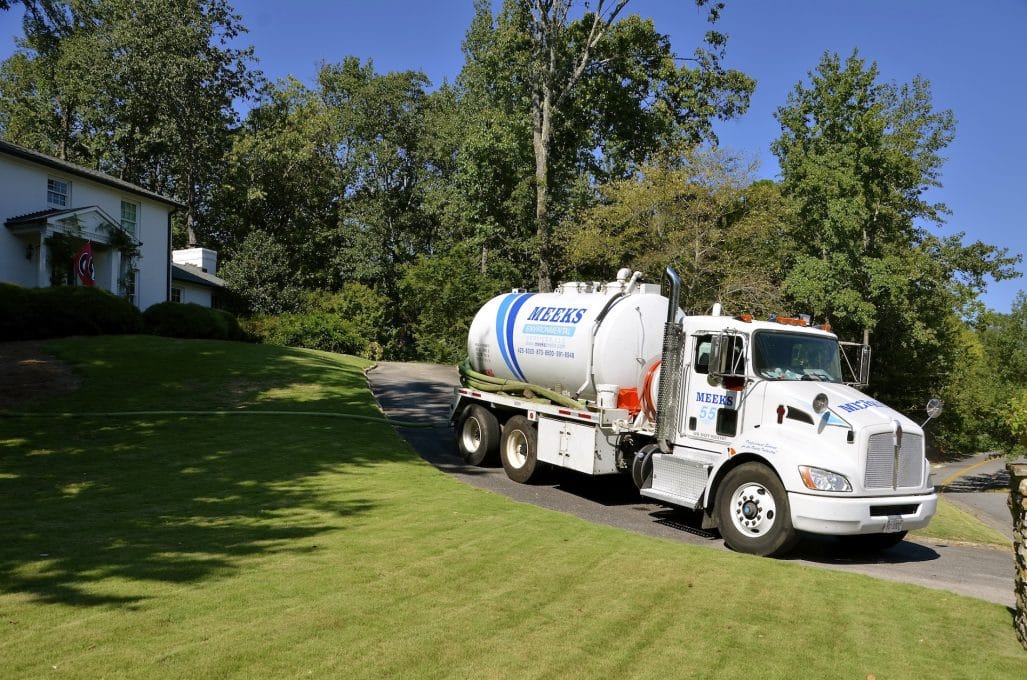Septic systems are an inexpensive and frequently viable option for sewer systems.
The most common tanks, starting in the 1940s, are concrete, with 3 – 500# lids for a 1000 gallon tank or 4 – 500# lids for a 1500 gallon tank. In the late 1990s, tanks started using 16” square concrete plugs with a lifting bail for easier access to both sides of the tank. Today, many tanks are fiberglass or plastic.
Over time, concrete can deteriorate and the lids may develop cracks or even break. Obviously, broken lids can be a major hazard as they can collapse into the tank. Even cracked lids should be replaced for safety reasons.
If your tank is deep, or you just don’t want to have your yard dug up every time your tank is cleaned, you may want to have risers installed. They allow access to your septic tank by removing 20” green lids. Each lid should be screwed down for safety. This is to prevent anyone, especially kids, from removing a lid and falling in.
Each time your tank is cleaned, it should be visually inspected. Typically, the water level should be 6” below the top of the tank and it should be full constantly. If five gallons of water enters the tank, there should be 5 gallons of water exiting the tank. The water level is also a good indicator of any issues. If the tank is not full, even with regular use, it could indicate a crack or hole in the tank which will allow water to seep through the tank. It could also indicate a blocked inlet line, either by roots or a broken pipe or a loose joint.
If the water level is too high or even overflowing the top of the tank, there are several possible causes. If there has been very heavy rainfall, the ground could be saturated and not allow any more water to percolate through the soil. In this case, the water will take the path of least resistance which would be to simply overflow the tank and cause puddling. If your tank has allowed solids to get into the field lines, it could plug the holes in the corrugated pipe, which again would not let water percolate through the soil as it should. If this is the case, the only solution would be to replace the field lines. To prevent solids from entering the field lines, you could have an outlet filter installed, but it would have to be cleaned on an annual basis. Still, it is much cheaper than replacing field lines.

